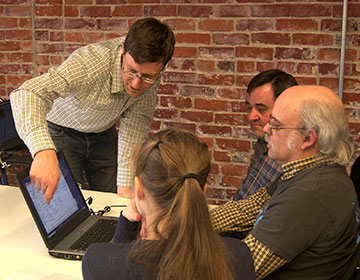Massillon City Schools Teaching Case
Overview of District Improvement Efforts

The change process in the Massillon City Schools has been underway for a decade. This process has involved actions that built the capacity of district leaders, OIP teams, and individual teachers to engage productively in improvement work. Recent changes in leadership, along with requirements and support from the ODE, accelerated and refocused the change process. Improvement efforts now support expanded leadership capacity and increased involvement of teachers in conversations about the use of evidence-based instructional strategies. Along the way, the district encountered significant financial challenges that led it to modify its organizational structure to promote greater efficiency.
Two broad themes characterize the change process in Massillon:
- Tradition and threats to tradition, including Massillon’s history and early reform efforts, and its response to financial threats; and
- Recent improvement efforts, including (1) cultivation of new leadership, (2) work to build broad-based leadership capacity, (3) use of OIP teams, and (4) efforts to improve instruction.
Tradition and Threats to Tradition

As in many towns across the heartland of the United States, football has been a defining force in Massillon since the early decades of the 20th century, and it has forged a strong bond between the Massillon City Schools and the community. Community involvement with the schools represents a tremendous resource. However, one possible consequence of Massillon’s enduring football tradition is that some people in the district may be more concerned with the district’s football performance than its academic achievements. Despite many areas of strong performance in the Massillon City schools, in 2007 district leaders—prompted by underperformance on state accountability measures—sought help with improvement efforts.
The strong school and community pride in Massillon’s reputation of athletic excellence, and the tradition of striving to meet competitive challenges, helped produce a climate in which school improvement efforts could find enthusiastic support. Along these lines, the district has provided summer ACT preparation classes that are aligned to summer training times—a strategy that is leading to increased ACT scores among student athletes.
Yet trends across the US suggest that Massillon’s football heritage might also present special challenges for the district. For instance, district leaders might want to be especially attentive if they see evidence of any of the following: slower than hoped-for progress toward academic invigoration at the high school; cultural values influenced by male-dominated athletics; a mismatch in the allocation of resources to sports in contrast to academics; and sports-team recruiting practices that work counter to an academic focus.
Despite whatever challenges of this sort the district has faced, its improvement efforts appear to have helped Massillon overcome lingering beliefs that academic excellence is secondary to athletic excellence. The district’s more than 10-year investment in improving its schools has moved Massillon firmly in a new direction
Reflective Questions
Some have suggested that, if a school district could ignite in its stakeholders a passion for academic excellence as compelling as the passion for athletic victory, educational reform efforts would be more likely to flourish.
- How might Massillon “sell” its vision of academic improvement to obtain enthusiastic “buy in” from its educators, staff, students and residents?
- What might a multi-tiered strategy for sharing this vision look like?
- How might a multi-tiered strategy help the school district generate widespread support for academic excellence on a par with Massillon’s tradition of athletic accomplishment?